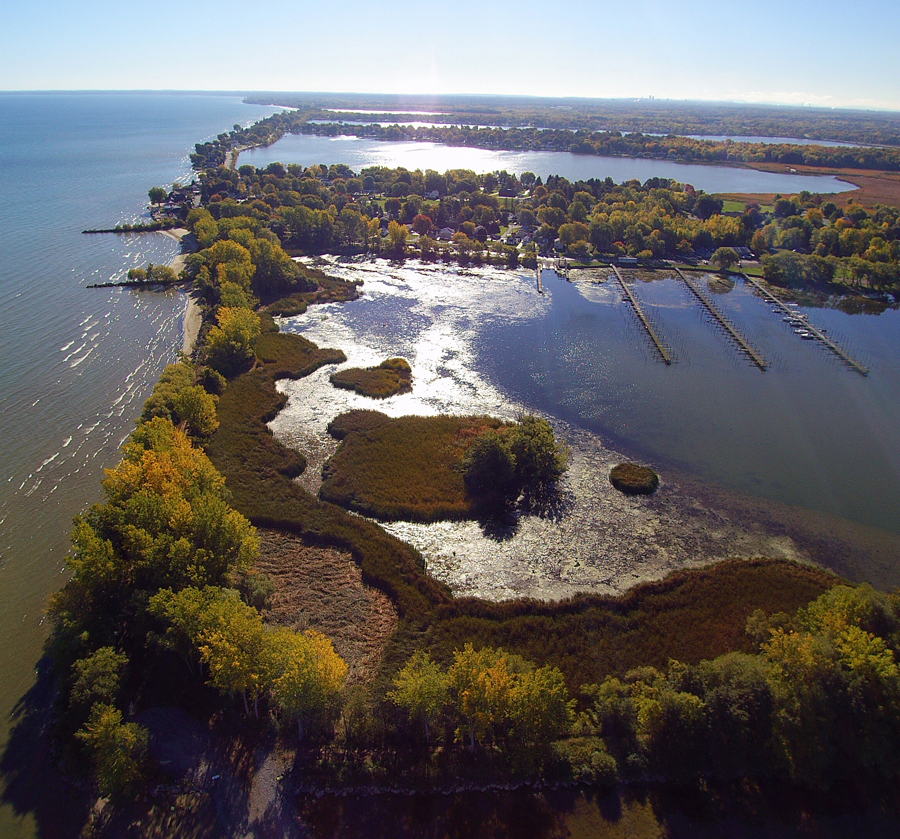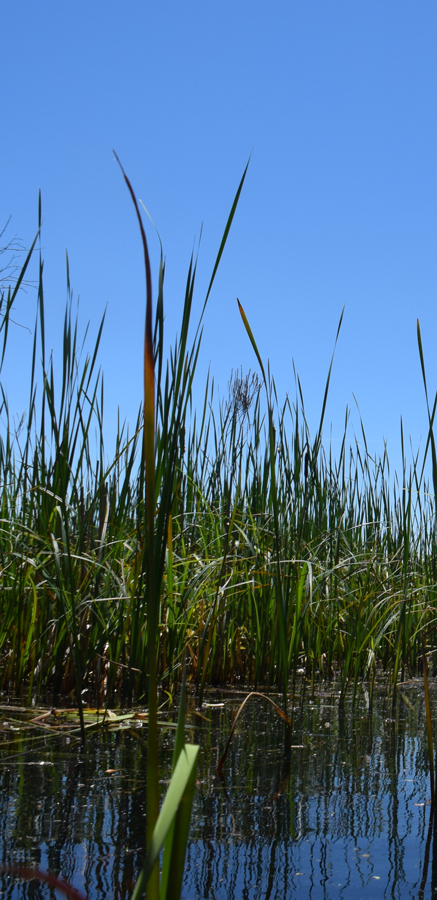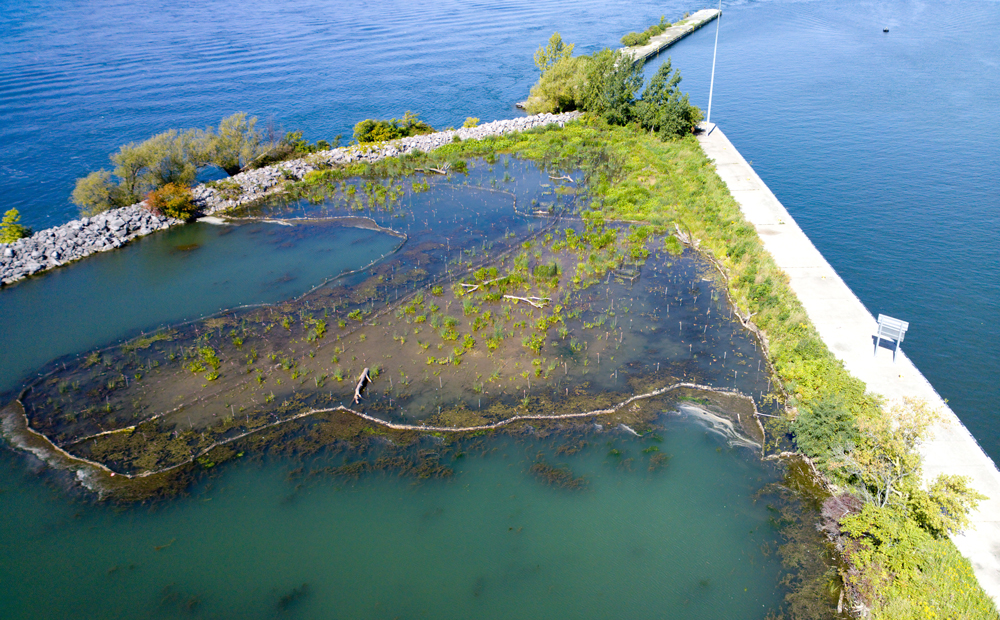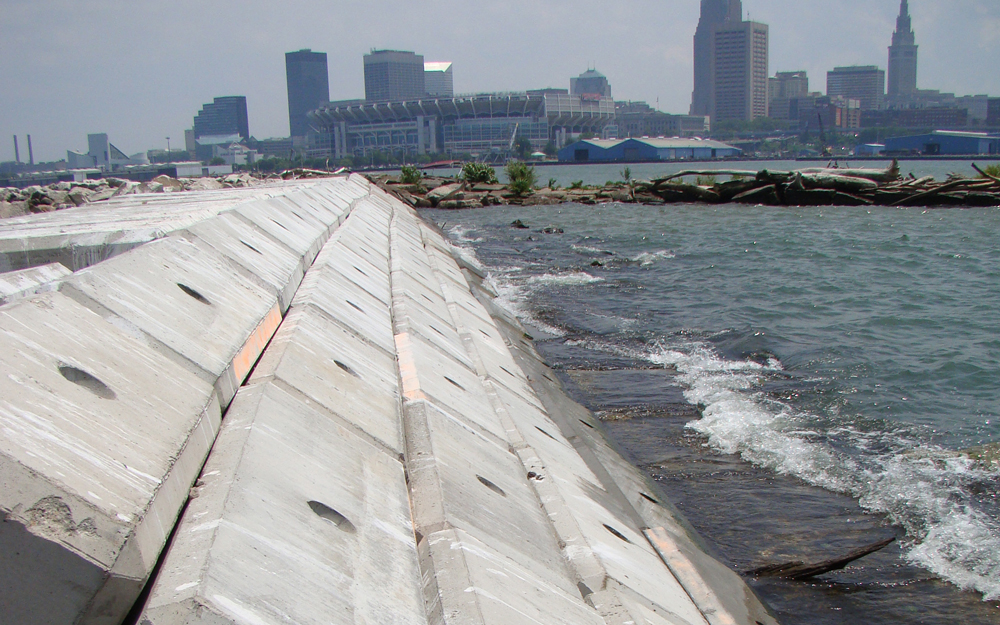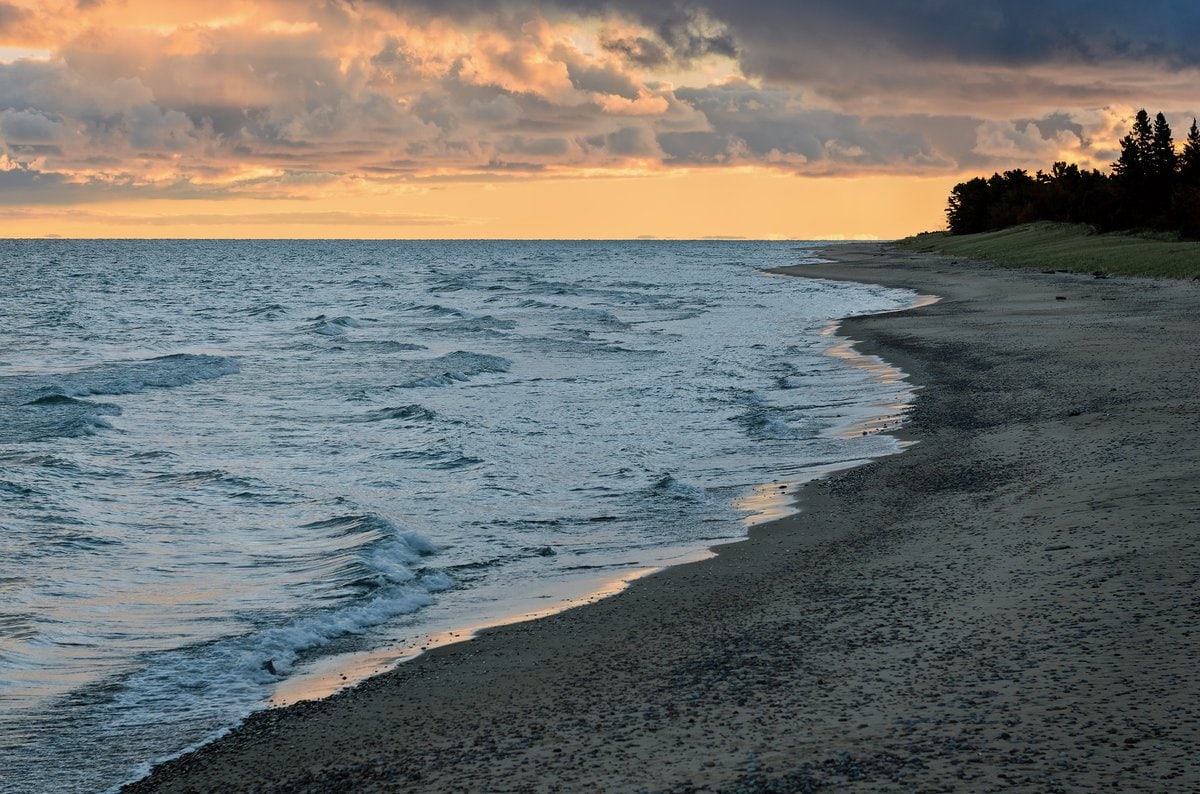This project is featured in Engineering With Nature: An Atlas, Volume 1.
Location: Lake Ontario, Greece, New York, United States.
Over the past 200 years, significant portions of original Great Lakes coastal wetlands have disappeared; 123 acres of emergent wetland—shallow-water wetland with herb and grasslike vegetation—were lost in Lake Ontario’s Braddock Bay alone. The U.S. Army Corps of Engineers (USACE) Buffalo District (LRB) implemented the Braddock Bay Ecosystem Restoration Project to save and reestablish 340 acres of this large coastal wetland area. The final project plan enhances existing wetland habitats for fish and wildlife and protects these areas from erosive forces that would lead to further loss. Implementation of the Braddock Bay Ecosystem Restoration project began in 2016 with Phase I of the project, which is now complete. It included the excavation of approximately 10 acres of channels and potholes within the existing marsh; invasive plants were also removed from the area. These actions will increase the number of vegetation species and improve Braddock Bay’s fish and wildlife habitats. Phase II, slated to be completed in 2018, includes the dredging of the boat channel, the construction of a barrier beach to protect the bay from future erosion damage, additional treatment of invasive hybrid cattails and phragmites, and the creation of new emergent wetlands.
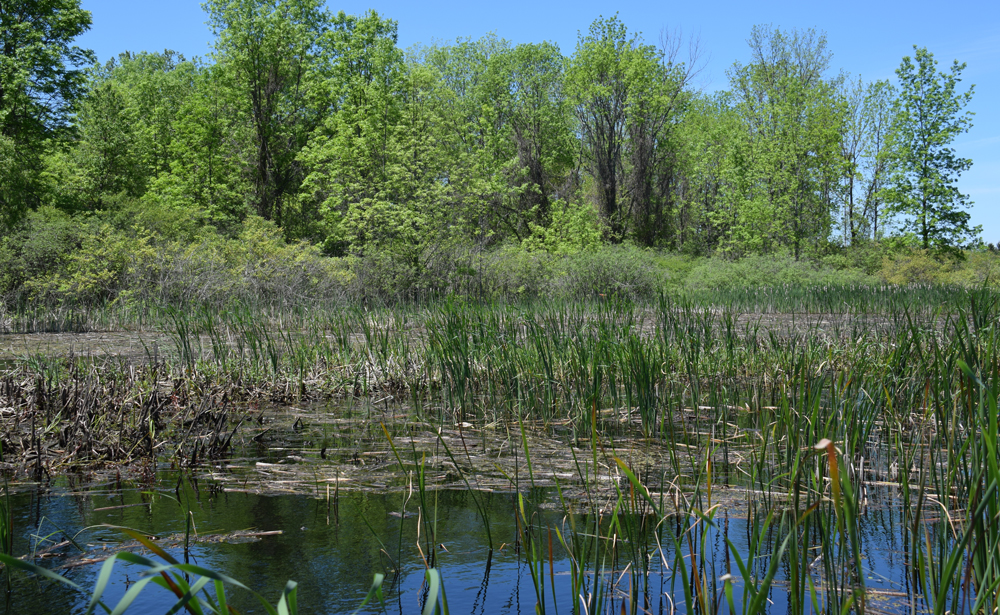
Producing Efficiencies
To improve resiliency of Braddock Bay’s coastal wetlands, a barrier beach in the form of a breakwater with nature-based features was constructed. The barrier beach provides the same protections that the historical natural barrier beach provided at this location. The barrier beach was constructed using a long rubblemound breakwater to form the backbone of the beach with two rubblemound terminal groins attached. Next, a three-acre headland beach was constructed; finally, two headland rubblemound breakwaters were built. The newly constructed barrier beach has reduced interior wetland erosion and restored the natural littoral drift processes for lake sediment; it also contributed to turning some Braddock Bay areas back into low-energy systems.
Using Natural Processes
Barrier beach protection, which gradually eroded away over the course of time, was documented at Braddock Bay as far back as the 1800s. For this project, a barrier beach was constructed in the mouth of the Bay to attenuate wave energy and function as the Bay’s historical sandspits once did. A network of channels and potholes were also excavated across 10 acres in the existing marsh to improve the physical conditions that would lead to a more varied vegetative community. The barrier beach will protect the existing wetlands from erosion and restore Braddock Bay to a low-energy system. Lower wave energy and reduced turbidity in the water of the Bay is expected to enhance and expand the variety of existing submerged aquatic vegetation community. With a more than 90 percent reduction in activity since 2005, the local marina had suffered a large cut in revenue and Bay-area property values have been threatened; this restoration project should eventually lead to increased activity at the marina as well.
Broadening Benefits
Habitat variety and augmented protection of emergent marsh habitat will lead to numerous social, ecological, and economic benefits. The prospect of engaging in much-improved wildlife-dependent recreation activities, such as hunting and birdwatching, will draw enthusiasts to the area. There has already been a documented 90 percent increase in the variety of wetland vegetation in restored areas of the project. The restored vegetation in the Bay, including its varied, emergent marsh meadows, will be an important source of spawning habitat to Lake Ontario fish species, such as the northern pike. Migrating waterfowl utilize the Bay, and black tern—an endangered species in the state of New York—previously used the area as a nesting site; it is hoped they will return.
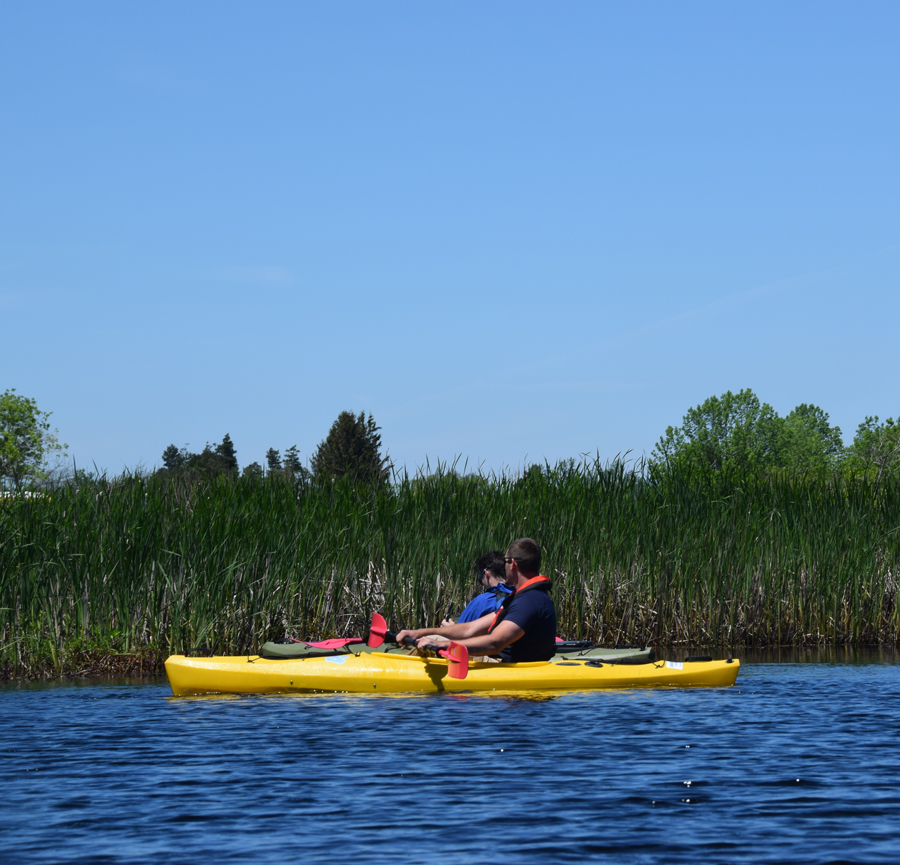
Promoting Collaboration
The project is being conducted under the Great Lakes Restoration Initiative through a partnership between USACE, the U.S. Environmental Protection Agency, the New York Department of Environmental Conservation, and the Town of Greece.
Project planners coordinated with local, state, and federal stakeholders and consulted experts to develop the optimal restoration plan. Several public meetings were held to inform the community about restoration proposals and to solicit comments and concerns. Project planners and the community, widely recognizing the Bay as a vital resource to the area, also obtained the support of Chuck Schumer, senator from New York.
